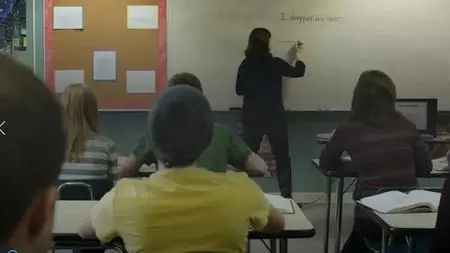How To Become A Teacher
Last updated 7/2020
MP4 | Video: h264, 1280x720 | Audio: AAC, 44.1 KHz
Language: English | Size: 1.19 GB | Duration: 0h 57m
Last updated 7/2020
MP4 | Video: h264, 1280x720 | Audio: AAC, 44.1 KHz
Language: English | Size: 1.19 GB | Duration: 0h 57m
Your Step By Step Guide To Becoming a Teacher
What you'll learn
How To Become a Teacher
Teacher Fundamentals
Teacher Basics
Teacher Tips & Lessons
Requirements
No experience necessary - All levels welcome - Beginner, Intermediate, Advanced
Description
If you want to become a better teacher, then get this step-by-step "How To Become a Teacher" course.In this step-by-step course, you will discover how to teach more effectively and become a better teacher.- Stand out as one of the best teachers in your school.- Impact and influence students in a positive and powerful way.- Watch your students grow and become more mature outstanding citizens because of your teaching skills and influence.- How to plans teaching lessons.- Different teaching techniques explained (constructivism, cooperative learning, discovery learning, etc).- How to manage a class the right way.- How to use the art of questioning in conducting discussions.- How to assess and evaluate a student's performance the right way.- How to teach students so that they can listen and want to learn from you.- And much more.Table of ContentsIntroduction 8Brief Overview of Teaching 9Chapter 1: The Teacher 10Teacher Self-Evaluation 1012 Recommended Self-evaluation Steps: 11Chapter 2: Total Scope of the Teacher’s Work 14Chapter 3: Specific Duties of the Teacher as a Homeroom Adviser 16Chapter 4: Teaching Skills 17Chapter 5: Lesson Planning 18Importance of a Lesson Plan: 18Parts of a Lesson Plan: 18Suggestions in Implementing a Lesson Plan: 18Chapter 6: Teaching Techniques/approaches 19Constructivism Main Features of ConstructivismCooperative Learning Main Features of Cooperative LearningDiscovery Learning Main Features of Discovery LearningStrengths of Discovery LearningIntegrative Learning Approach Three Comprehensive Components of the Integrative Learning ApproachSome Modes of Integrative Teaching Thematic Teaching Content-Based Instruction Focusing Inquiry Generic Competency Model Teaching Strategies Chapter 7: Classroom Management and other Discipline Chapter 8: The Art of Questioning in Conducting Discussions and Recitations Questioning Uses of Questions Characteristics of a Good Question Techniques of QuestioningTechniques in Handling Students’ Responses Techniques in Handling Students’ Questions Chapter 9: Assessment and Evaluation Assessment Evaluation Two Types of Evaluation Purposes of Assessment Assessment Strategies Performance Assessment Possible types of Activities that can be Used to Assess Performance Features of a Formal Performance Assessment Some Instruments in Assessing Students’ Performance Chapter 10: Portfolio Assessment Why Use Portfolio Assessment? Principles Underlying Portfolio Assessment Student Portfolios Types of Portfolios Samples to Include in a Portfolio Organization of Portfolios Evaluation Tools for Student Portfolios Chapter 11: Rubric Rubric Advantages of using Rubrics in assessmentCommon Features of Rubrics Examples of Measuring Range and Scoring Levels Critical Components of Rubrics How Do You Create Rubrics? Conclusion
Overview
Section 1: Introduction
Lecture 1 Introduction
Lecture 2 Welcome
Lecture 3 Part 1
Lecture 4 Part 2
Lecture 5 Part 3
Lecture 6 Part 4
Lecture 7 Part 5
Lecture 8 Part 6
Lecture 9 Part 7
Lecture 10 Part 8
Lecture 11 Part 9
Lecture 12 Part 10
Lecture 13 Part 11
Lecture 14 Conclusion
Teachers,Aspiring Teachers



